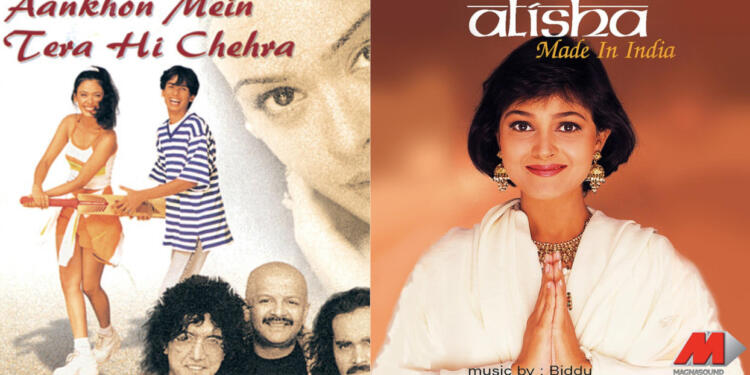When it comes to side-to-side slow dancing, people born in the 70s, 80s, or 80s, would possibly find themselves moving their bodies to the tunes of ‘Lag Ja Gale’, ‘Bade acche lagte hain‘, etc. And, when it comes to swinging their bodies to some groovy music, most of them will listen to Indie Pop songs like ‘Aankhon me Tera hi Chehra,’ ‘Made in India’, ‘Aiyo Rama’, etc. However, with the introduction of new music styles, and changes in preferences, the popularity of Indie Pop music died a little too soon. But the question still remains— why such neat music is not popular anymore? Let’s ponder over it.
Indie Pop resurrected during lockdowns:
When PM Modi announced the first lockdown in 2020, people started to look for in-house entertainment in order to stay away from excess negativity. Music, obviously, was the first choice for a major section of the population. A vast section of the population was found listening to Indie Pop musicians like Alisha Chinai, Daler Mehndi, Lucky Ali, and Falguni Pathak. In fact, it was during the lockdown, when most of Gen Z was introduced to Indie Pop music.
Read more: Suicides, unreal expectations and more: The dark underbelly of K-Pop
Indie Pop originally started in the 1970s:
Its emergence on the Indian billboards can be traced way back to the 1970s. This was the era when Asian countries were trying to get ahead of their erstwhile colonizers. However, they found it difficult to culturally separate themselves from their colonizers’ centuries-old influence. A sense of patriotism for their own nation, along with a little sympathy for western culture produced an intermix of pop music in Asia during the 1970s. However, in India, these pops were able to establish themselves only during the 1980s, though they could not fully cement their place in this decade.
LPG reforms proved to be decisive for Indie Pop:
In 1991, India liberalised its economy and opened its consumer market for companies all around the world. As people got prosperous, they started looking for more entertainment as well. This is when Indie Pop established its mark. The industry burst onto the scene with two big hits in 1995.
Daler Mehandi’s Bolo Ta Ra Ra.. and Alisa Chenoy’s hunt for a perfect man in Made in India were top super hits that year. They sold a total of 2.5 crore cassettes in that particular year itself. It was an extremely huge number considering that India’s consumer spending was extremely low during those days.
Various other singers jumped in to build on the success of these two mavericks. A.R. Rahman produced an Indie Pop version of the patriotic song called Vande Matram in 1997. Similarly, Sonu Nigam’s current stardom owes mainly to his hits like Sapne ki Baat, Afsana, Kismat, Jaan, etc. The same holds true for Shankar Mahadevan, Lucky Ali, and various other singers.
Extreme pressure and budget constraint forced Indie Pop into oblivion:
As with most good things, Indie Pop started to witness a sudden downfall in the early years of the 21st century. The constant pressure to produce hits after hits compiled artists to compromise on the quality. And this is how the art of Indie Pop music went slowly into oblivion.
Sunita Rao, who gave hits like Ab ke baras in 2000, opined, “Like anything else in the industry, the novelty faded away after some time. We were under the condition that we’d get support for our next album only if we delivered a hit. The indie pop wave couldn’t sustain itself. It was almost like a firefly — short-lived but bright,”
Read more: Frustrated Reviews: A very late but a very accurate analysis of misandrist movie “Dil Dhadakne Do”





























